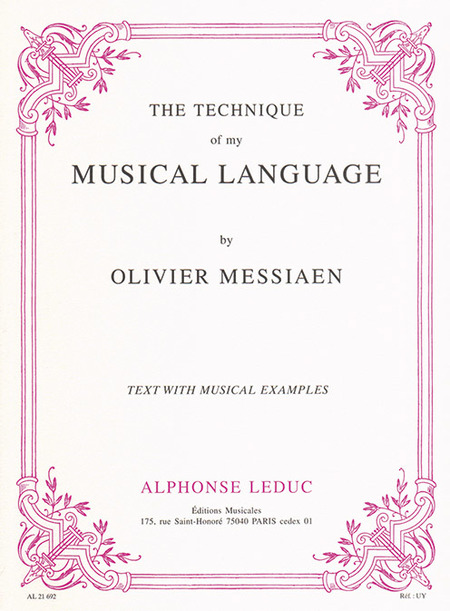What do you think?
Rate this book


Hardcover
First published January 1, 1944
Supremacy to melody! The noblest element of music, may melody be the principal aim of our investigations...rhythm remains pliant and gives precedence to melodic development, the harmony chosen being the "true," that is to say, wanted by the melody and the outcome of it.Messiaen seems to present his outline of this musical language as a systematic endeavour, with the groundworks of rhythm, explicated first of all, followed by harmony, which is the "noblest element," and thence harmony, as a necessary outcome of melody. We can see the presented logic in the interrelation between these musical elements that are constantly referred back to, e.g., the relation of modes of limited transpositions with nonretrogradable rhythms, the relation of added notes and added values, etc., which arrives by the end at a grander conception of 'musical language', incorporating all of these elements, such as 'Three Modes Superposed' and 'Polymodal Modulation' (Chapter XIX).
These modes [of limited transposition] realize in the vertical direction (transposition) what nonretrogradable rhythms realize in the horizontal direction (retrogradation)…These modes cannot be transposed because they are - without polytonality - in the modal atmosphere of several keys at once and contain in themselves small transpositions; these rhythms cannot be retrograded because they contain in themselves small retrogradations.Messiaen, seemingly holding this systematic view of 'musical language', formally attributes it a sort of "tonal ubiquity in the nontransposition," whereby the now identical beginning and end (within the music but now displayed in his text, too) allows for a unity of movement within the music. This he calls the “theological rainbow” of musical language—while his commentary in this area remain somewhat vague, it would appear (from his explanation and examples posited throughout musical history and in the structure itself) that it relates directly to this kind of unifying, and therefore perhaps divine, quality to the music; and thus his "edification and theory" systematises this in a precisely theological manner.
In A1, the antecedent of the theme; in A2, the consequent of the theme. In B, the middle period, developing the fragment Y bracketed in the theme; Y is repeated six times upon different degrees - the first time a melodic variant, the second time a rhythmic variant.In discussing this extract, Messiaen treats the structure logically, deconstructing it and presenting it as distinct parts that fit naturally in the cohesive whole. But this is not so clinical—in a similar fashion to Locke referring to Logic as standing on a natural entity, a "native faculty to perceive the coherence or incoherence of its ideas," so too is the ‘logic’ to this structure presented as an externalisation of some deeper musical current.